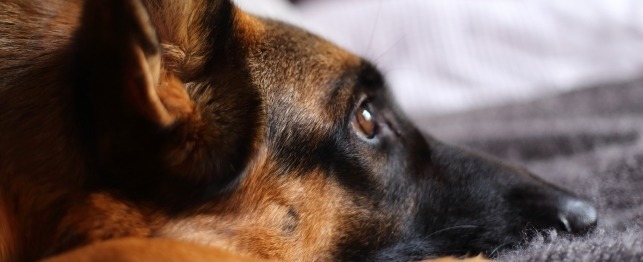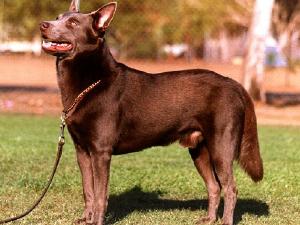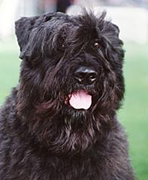
Dogs
The Norwegian Lundehund has some of the most singular characteristics of any other breed. Born in wintry Norway, the Lundehund was bred to retrieve live puffins-a plentiful source of meat-from steep and precarious cliffs. In fact, their name translates to "puffin dog" in Norwegian. The breed's unique skeletal features allow for nimble navigation and squeezing into narrow crevices.
The Norwegian Lundehund is a smaller member of the Spitz family with a thick double coat to protect from harsh weather. They are usually reddish brown to tan in color, and most have white markings. The unique features of the Lundehund include six toes on each foot with the toes on the front legs being triple- and double-jointed, flexible shoulders, and pricked ears which can close and fold forward or backward. In addition, the breed has such a flexible neck they can very nearly bend it to touch their backs. They are usually 13-15 pounds in size.
The Lundehund is a highly active, alert, and energetic breed. It comes as no surprise that the breed is naturally athletic, which helps them excel at various dog sports such as agility or flyball. They benefit greatly from regular play sessions or long walks or hikes to burn off excess energy. Another peculiar characteristic of the breed is that they are avid collectors of shiny items, and can hoard food items for a midnight snack.
Norwegian Lundehunds develop a tight bond with their family, including older children. They may have less tolerance, however, for very young children who pull tails or ears. Early socialization is recommended to reduce fear and shyness, and supervision is recommended during play sessions with younger family members. The Lundehund may not be an appropriate breed choice for apartment or condo dwellers, as the breed loves to be vocal. Families with cats, small furry animals, or pet birds will want to exercise caution, as the Lundehund has been known to have a high prey drive.
The breed has a tendency for stubbornness and independent thinking, both of which can present training challenges. They benefit from positive reinforcement training methods, as well as short, frequent training sessions to keep interest piqued. The Lundehund also responds well to changes in vocal tone, which goes a long way to get their attention. Their favorite rewards for good behavior include praise, play, and food.
The dense double coat should be brushed weekly to keep mats and shedding at bay. During shedding seasons, they will benefit from daily brushing. Nails should be regularly trimmed, teeth brushed, and ears cleaned to prevent infections.
Lundehunds have the ability to perform Houdini-esque escapes over (or under) fences or through crevices. Supervision is recommended to reduce the risk of injury during backyard activities.
The Lundehund has a tendency to develop Lundehund Syndrome. This intestinal disorder prohibits absorption of nutrients and can result in weight loss, no matter how much food is taken in. It has been reported that all members of the breed have the genetic makeup to develop this disease; however, severity may vary, with some Lundehunds being relatively unaffected. The disorder, in some cases, may be adequately managed with a specialized diet.
The average life span of the Norwegian Lundehund is approximately 10 years.
 Is a German shepherd Right for You? Survey Results from German shepherd Owners
Is a German shepherd Right for You? Survey Re
Is a German shepherd Right for You? Survey Results from German shepherd Owners
Is a German shepherd Right for You? Survey Re
 Australian Kelpie
Australian Kel
Australian Kelpie
Australian Kel
 Labrador Retrievers: A guide to dogs and puppies of the Labrador Retriever breed
The Labrador Retriever!
The Labrador Retriever has several
Labrador Retrievers: A guide to dogs and puppies of the Labrador Retriever breed
The Labrador Retriever!
The Labrador Retriever has several
 English Cocker Spaniels: A guide to dogs and puppies of the English Cocker Spaniel breed
The English Cocker Spaniel!
The English Cocker Spaniel is a
English Cocker Spaniels: A guide to dogs and puppies of the English Cocker Spaniel breed
The English Cocker Spaniel!
The English Cocker Spaniel is a
 Bouvier des Flandress: A guide to dogs and puppies of the Bouvier des Flandres breed
The Bouvier des Flandres!
The Bouvier des Flandres is a her
Bouvier des Flandress: A guide to dogs and puppies of the Bouvier des Flandres breed
The Bouvier des Flandres!
The Bouvier des Flandres is a her
Copyright © 2005-2016 Pet Information All Rights Reserved
Contact us: www162date@outlook.com